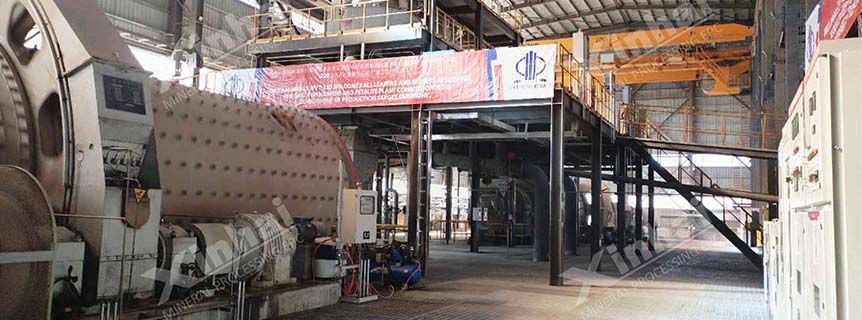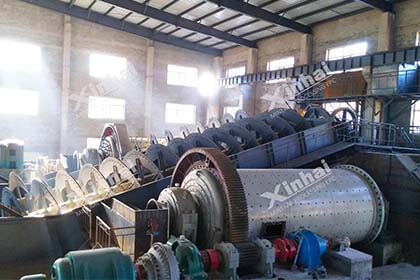Top 5 Advantages of Using a Rod Mill in Your Manufacturing Process
 Laura
Laura
 Oct 28, 2024
Oct 28, 2024
 426
426
If you want to know more details about equipment, solutions, etc, please click the button below for free consultation, or leave your requirements!

( Using a Rod Mill in Your Manufacturing Process)
In the world of manufacturing, the choice of equipment can significantly influence the quality of the final product, the efficiency of the operations, and the overall cost-effectiveness of the production process. One such piece of equipment that has gained prominence in various industries is the rod mill. While many manufacturers may be familiar with traditional ball mills, rod mills offer unique advantages that can enhance performance and output. In this blog post, we will explore the top five advantages of using a rod mill in your manufacturing process, helping you make an informed decision for your operations.
01Enhanced Product Quality
BackOne of the primary benefits of using a rod mill is the enhanced quality of the product it produces. Rod mills are designed to produce a finer product with a more uniform size distribution compared to other milling methods. This is primarily due to the way rods are used in the milling process. Unlike balls, which can produce a lot of fines (unwanted small particles), rods work more effectively to crush and grind the material without generating excessive fines.
The uniformity of the product size is crucial in many applications, particularly in industries like construction, metallurgy, and mineral processing. For example, in the production of concrete, the quality of the aggregate plays a vital role in determining the strength and durability of the final product. Using a rod mill ensures that the aggregate is of consistent size, leading to better performance in construction applications.
Moreover, the gentle grinding action of rod mills helps maintain the integrity of the material being processed. This is particularly important in the case of brittle materials that can be easily damaged during milling. The controlled grinding environment of a rod mill minimizes the risk of over-grinding and ensures that the final product retains its desired properties.
02Improved Energy Efficiency
BackEnergy consumption is a significant concern for manufacturers, especially in an era where sustainability and cost control are paramount. Rod mills are known for their energy efficiency, making them an attractive option for businesses looking to reduce operational costs.
The design of rod mills allows for a more efficient transfer of energy to the material being processed. The long, slender rods provide a larger surface area for contact with the material, resulting in better energy transfer compared to traditional ball mills. This means that rod mills can achieve the same level of grinding with less energy input, leading to lower electricity costs and reduced environmental impact.
Additionally, the lower energy consumption of rod mills can translate into a longer lifespan for the equipment. When machines operate efficiently and with less strain, they are less likely to experience wear and tear, reducing maintenance costs and downtime. This can further enhance the overall efficiency of the manufacturing process, allowing for more consistent production schedules.
03Versatility in Applications
BackRod mills are incredibly versatile and can be used in various applications across different industries. They are particularly effective in the processing of ores, coal, and various types of minerals, making them a popular choice in mining and mineral processing operations.
In addition to traditional applications, rod mills are also used in the production of various materials, including ceramics, glass, and chemicals. Their ability to handle a wide range of materials and produce different particle sizes makes them a valuable addition to any manufacturing facility.
Furthermore, rod mills can be used in both wet and dry milling processes. This versatility allows manufacturers to tailor their operations to meet specific requirements, whether they are seeking to produce fine powders or coarser materials. The ability to adapt to different milling conditions can enhance the overall efficiency of the manufacturing process and open up new opportunities for product development.
04Lower Operating Costs
BackWhen considering the total cost of ownership of manufacturing equipment, it is essential to look beyond the initial purchase price. Operating costs, including energy consumption, maintenance, and labor, can have a significant impact on the overall financial performance of a manufacturing facility. Rod mills offer several advantages that can help reduce these operating costs.
As mentioned earlier, rod mills are more energy-efficient than many other milling options. Lower energy consumption translates to reduced electricity bills, which can significantly impact the bottom line, especially for large-scale operations. Additionally, the reduced wear and tear on equipment can lead to lower maintenance costs and less frequent need for replacements or repairs.
Moreover, rod mills typically have a simpler design than other milling machines, making them easier to operate and maintain. This simplicity can reduce labor costs, as fewer personnel may be required to operate and monitor the equipment. Furthermore, operators can be trained more quickly, leading to increased productivity and less downtime during training periods.
05Improved Safety and Environmental Considerations
BackSafety and environmental concerns are increasingly important in manufacturing processes. Rod mills can help address these issues in several ways. First, the design of rod mills typically incorporates features that enhance operator safety. For example, many rod mills are equipped with safety guards and automatic shut-off systems that minimize the risk of accidents during operation.
Additionally, the lower energy consumption associated with rod mills contributes to a reduced carbon footprint. As manufacturers seek to comply with stricter environmental regulations and demonstrate their commitment to sustainability, the use of energy-efficient equipment like rod mills can be an essential part of their strategy.
Furthermore, the controlled grinding environment of rod mills minimizes dust generation and the release of harmful particles into the air. This is particularly important in industries where airborne contaminants can pose health risks to workers or surrounding communities. By using rod mills, manufacturers can create a safer working environment while also reducing their impact on the environment.
06Conclusion
BackIn conclusion, the advantages of using a rod mill in your manufacturing process are numerous and impactful. From enhanced product quality and improved energy efficiency to versatility in applications and lower operating costs, rod mills offer a compelling solution for manufacturers looking to optimize their operations. Additionally, the safety and environmental benefits associated with rod mills make them an attractive choice in today’s increasingly regulated manufacturing landscape.
As you consider the best equipment for your manufacturing needs, it’s essential to evaluate the unique advantages that rod mills can bring to your operations. By investing in this technology, you can enhance your production capabilities, improve product quality, and ultimately drive greater profitability for your business. Whether you are in the mining, construction, or materials processing industry, a rod mill may be the key to unlocking new efficiencies and opportunities in your manufacturing process.
As always, it's crucial to conduct thorough research and consult with industry experts to determine the best milling solution for your specific needs. The right equipment can make all the difference in achieving your production goals and maintaining a competitive edge in your industry.
Contact us and learn more about Rod Mill.
 +86 18716000713
+86 18716000713 xlyin@xinhaimining.net
xlyin@xinhaimining.net




 Message
Message Chat Now
Chat Now

















